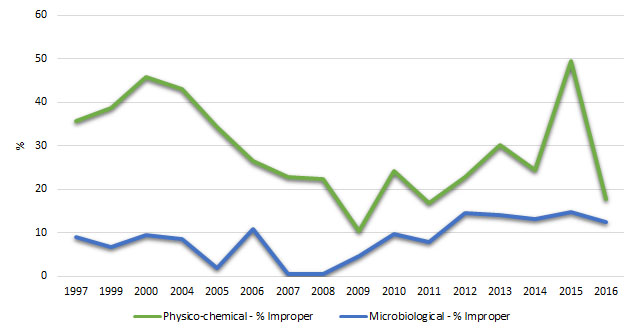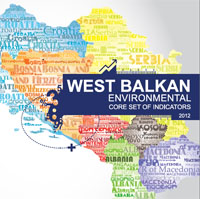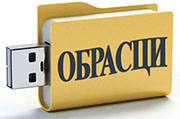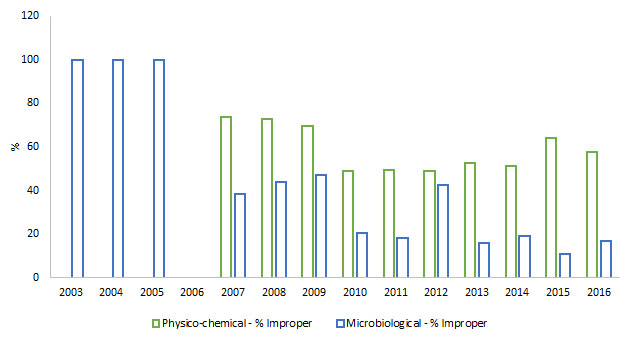| BATHING WATER QUALITY |
The indicator describes the changes over time in the quality of designated bathing waters in terms of compliance with standards for microbiological parameters (total coliforms and faecal coliforms) and physicochemical parameters (mineral oils, surface-active substances and phenols) introduced by the EU Bathing Water Directive (76/160/EEC).
- The data is expressed in a form of percentage of inland bathing waters with mandatory standards and levels specified in guidelines for microbiological and physicochemical parameters.
Has the quality of bathing water improved?
The quality of lake water is at mainly satisfactory level. However, there are rivers which with their entry into the lakes contribute to deterioration of the quality of lake water. The percentage of samples with non-compliant quality is still very high (especially for physical and chemical parameters) Settlements around the three natural lakes are among the rare ones with wastewater treatment plants available in the country.
Approximation of the national legislation and standards in this area with the EU Bathing Water Directive should continue.
Figure 1. Quality of bathing freshwater – lakes
 Figure 2. Quality of bathing freshwater – artificial lakes
Figure 2. Quality of bathing freshwater – artificial lakes
Data coverage: excel
Source: Public Health Institute of the Republic of Macedonia, http://www.iph.mk/en
The greatest proportion of water areas in the country belongs to natural lakes, the shores of which are used for recreation purposes. The quality of water in these lakes is threatened by discharges of wastewater, uncontrolled use of lake waters for agricultural and tourism purposes, as well as by weather conditions. Apart from natural lakes, there are artificial lakes – water accumulations in the Republic of Macedonia, used for both recreation and economic purposes.
The problems of bathing water quality protection in the lakes are closely related to the implementation of one of the highest priorities in the country’s environment protection – construction of adequate wastewater treatment facilities.
As international waters, the waters of the biggest natural lakes, i.e. Ohrid and Prespa, are also subject of bilateral and trilateral agreements between the Republic of Macedonia, Republic of Albania and Republic of Greece, respectively.
- Methodology for the indicator calculation
Standard methodology for sampling – annual data.
List of relevant policy documents
The National Environmental Action Plan – 2 and the Environmental Monitoring Strategy and Environmental Data Management Strategy.
Bathing Water Directive (76/160/ЕЕC) requires the countries to identify water bodies intended for bathing and carry out monitoring of their quality during the bathing period. Water bodies identified for bathing are those water bodies designated by the competent authorities and those where bathing has been practiced traditionally by high number of swimmers. The bathing period is determined in accordance with the period during which the highest number of swimmers is present. Qualitative monitoring takes place on daily basis during the bathing season, as well as two weeks before the commencement of the bathing season. 95% of the samples have to comply with mandatory standards.
Legal grounds
Law on Waters, Decree on categorization of water courses, lakes, accumulations and water resources.
It is necessary that all water bodies identified for bathing comply with mandatory values of water quality specified in Bathing Water Directive and the provisions of the Law on Waters.
- WHO
| Code | Title of the indicator | Compliance with CSI/ЕЕАor other indicators | Classification by DPSIR | Type | Linkage with area | Frequency of publication | |
| MKNI 022 | Bathing water quality | CSI 022 | Bathing water quality | S | B | shore
water |
annually |






































































